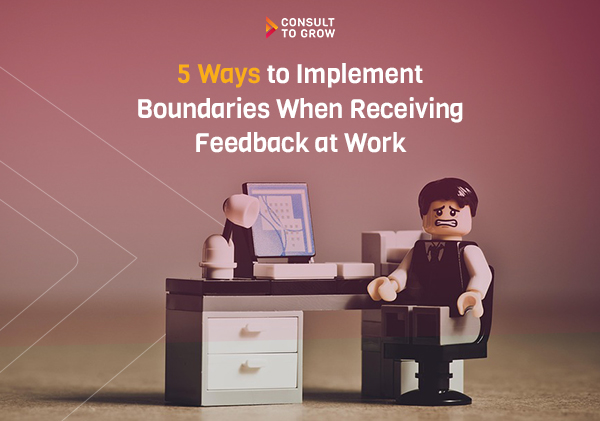In the realm of hourly pay, clarity is crucial for both employers and employees. From blended rate overtime to travel time, here are five essential aspects that everyone in the workforce should understand.
1. Blended Rate Overtime: The Ins and Outs
Top Line: If you’re earning multiple rates of pay and overtime hours during a single pay period but not being paid Blended Rate Overtime, your employer is likely violating wage rules and regulations.
Navigating Blended Rate Overtime: Clearing the Path to Fair Compensation
Understanding blended rate overtime is essential for both employers and employees to ensure fair compensation and compliance with labor laws. Let’s delve into the intricacies of blended rate calculations and explore the potential benefits and pitfalls associated with this compensation structure.
In general, overtime is defined as any time an employee works beyond a standard 40-hour work week (though this varies in some states and cities). According to the Fair Labor Standards Act (FLSA), employees working over 40 hours should be paid 1.5 times their “regular wage.” When employees have one rate of pay for the entire work week, calculating overtime is straightforward. However, when work is performed at two or more rates, overtime must be paid out at a blended rate.
For example, Blended Rate Overtime applies when you work a few bar shifts, a few supervisor shifts, that have different pay rates, and you went into overtime hours for the week. Or, your employer pays you one rate for days, another rate for late nights, and you go into overtime hours for the week and so on.
Blended Rate Overtime Explained:
Calculating the Blend: Blended rate overtime involves combining regular and premium rates to calculate overtime within a single pay period. The regular rate is the standard hourly rate, and the overtime rate typically applies to hours worked beyond the standard 40 hours per week. The blend is calculated by adding the regular and overtime earnings and dividing by the total hours worked.
You can follow these steps for calculating overtime with two different pay rates:
- Determine the employee’s base pay.
- Multiply the amount of hours worked in both roles by hourly rates.
- Determine the sum of the total wages from these positions to figure out the total amount compensated.
- Calculate the weighted average pay rate
- Divide the base bay by the total hours worked.
- Determine the weighted overtime total
- Multiply the weighted average pay rate by 0.5 to calculate the blended overtime pay rate.
- Multiply the overtime rate by the total overtime hours, which will give you the total bonus overtime pay.
- Calculate the total earnings
- Find the sum of the weighted overtime total and the employee’s base pay.
You can find a more detailed overview here. If you’re an employer paying different rates of pay to hourly employees, be sure to check in with your payroll provider and/or employment attorney to ensure you’re accurately paying your team. If you’re an employee not sure if you’re getting paid correctly, first check in with the HR department or feel free to contact us with your pay stub to take a look for you.

2. Time Worked off the Clock: Unraveling the Complexity
Top Line: If your employer is failing to accurately record your time & pay and/or asking/requiring you to do compensable work off the clock, your employer is likely violating wage rules and regulations.
Accurate time tracking is the cornerstone of fair compensation, playing a pivotal role in ensuring both employers and employees adhere to legal and ethical standards. In this section, we’ll delve into why accurate time tracking is paramount, the potential consequences of off-the-clock work, and strategies to guarantee fair compensation for every hour worked.
The Importance of Accurate Time Tracking:
- Legal Compliance: Accurate time tracking is not just a matter of good practice; it is a legal requirement. Labor laws mandate that employers accurately record and compensate employees for all hours worked. Failure to do so can result in severe legal consequences, including fines, lawsuits, and damage to the company’s reputation.
- Fair Compensation: Accurate time tracking ensures that employees are fairly compensated for the work they contribute. It sets the foundation for a transparent employer-employee relationship, promoting trust and preventing disputes over hours worked and wages earned.
Consequences of Off-the-Clock Work:
- Wage Violations: When employees work off the clock, it often leads to wage violations. This can include unpaid overtime, failure to meet minimum wage requirements, and a host of other labor law infringements. Employers found guilty of such violations may face legal penalties and financial repercussions.
- Employee Discontent and Turnover: Employees working off the clock may feel undervalued and overburdened, leading to discontent and potential turnover. The consequences extend beyond legal implications, impacting the overall workplace morale and productivity.
Strategies for Ensuring Fair Compensation:
- Implement Clear Policies: Establish clear and comprehensive policies regarding time tracking. Clearly communicate expectations, procedures, and consequences for non-compliance. Make sure employees understand the importance of accurate time recording.
- Invest in Technology: Utilize time-tracking technologies to streamline the process and minimize errors. Automated systems not only reduce the likelihood of inaccuracies but also provide a digital trail for compliance purposes.
- Regular Training and Communication: Conduct regular training sessions on time-tracking procedures. Keep employees informed about any updates or changes to policies. Open lines of communication ensure that everyone is on the same page regarding the importance of accurate time tracking.
- Encourage Reporting: Create an environment where employees feel comfortable reporting any concerns about time tracking. Encourage them to speak up if they believe they are not being fairly compensated or if they notice discrepancies in their recorded hours.
If you are an hourly employee, you should be clocked in at all times you are doing work for the company. Managers should not ask you to complete work-related tasks before you start your shift, nor should they ask you to clock out before doing post-shift tasks. If there are any errors with your clock-in and clock-outs, tell your manager immediately so that they can be corrected before they impact your payroll. Employers and Employees can learn more about pre- and post-shift compensable time here.
Accurate time tracking is a fundamental aspect of fair compensation, legal compliance, and a harmonious workplace. Employers and employees must work together to ensure that time-tracking practices are transparent, efficient, and aligned with the principles of fairness and compliance. By doing so, both parties contribute to a positive work environment where every hour worked is recognized and compensated appropriately.
3. Volunteering: Balancing Altruism and Fair Compensation
Top Line: If your employer is “requiring” you to volunteer without compensation, your employer is likely violating wage rules and regulations.
Navigating the Thin Line: Voluntary Actions vs. Compensable Work
In the realm of employment, there exists a delicate balance between voluntary actions and compensable work. Employers must tread carefully to ensure that voluntary contributions do not inadvertently cross into unpaid labor territory. This section explores the fine line between the two, examining scenarios where employees might be asked to contribute their time without pay and the considerations that come into play.
Understanding Voluntary Actions:
Definition: Voluntary actions encompass activities that employees choose to undertake willingly, without coercion or expectation of compensation. These may include volunteering for additional projects, participating in company events, or contributing to initiatives that go beyond the scope of their regular duties.
Scenarios Where Employees Might Be Asked to Contribute Time Without Pay:
- Company Events and Celebrations: Employees may be invited to participate in company events, celebrations, or team-building activities outside regular working hours. While attendance is often voluntary, the distinction between personal enjoyment and work-related expectations can blur.
- Philanthropic and Community Involvement: Companies often engage in philanthropic activities or community service, inviting employees to volunteer their time for charitable causes. While participation is typically voluntary, employers must be cautious to avoid pressuring employees or creating an expectation of uncompensated work.
- Unofficial Work-Related Tasks: Employees may be asked to contribute time to tasks that are indirectly work-related but not explicitly outlined in their job descriptions. This could include assisting with organizational initiatives, contributing to brainstorming sessions, or supporting colleagues on projects.
Volunteer Time: When and Who to Pay
In general, under federal law, if employees engage in company-sponsored volunteer activities during work hours or time they would ordinarily be working, they must be paid for that time.
Outside of regular work hours, volunteer time is compensable if:
- Participation is required by an employer
- Employees who choose not to participate experience adverse consequences
- An employer directs or controls volunteer activities
- Employees who participate are given a guaranteed direct award, such as a bonus
Employers are not required to pay non-exempt employees for volunteer time spent outside their normal work hours for truly voluntary activities not controlled or directed by the employer. Requests to perform charitable event tasks like hosting an event or providing promotional activities can cross over to compensable requirements.
Considerations for Employers:
- Clarity in Communication: Employers should communicate clearly about the voluntary nature of activities and the absence of compensation expectations. Providing this clarity helps prevent misunderstandings and ensures that employees participate willingly.
- Avoiding Coercion: Employers must avoid any form of coercion or pressure when seeking voluntary contributions. Employees should feel free to decline participation without fearing repercussions.
- Recognition and Appreciation: While not monetary compensation, employers can express gratitude for employees’ voluntary contributions through recognition programs, acknowledgment in company communications, or other non-financial means.
- Time-Tracking Transparency: If voluntary actions occur during regular working hours, employers should be transparent about the impact on employees’ schedules. Clear communication and transparency help manage expectations regarding workload and time commitments.
- Legal Compliance: Employers must ensure that voluntary actions align with labor laws. If an activity is integral to the job or if attendance is implicitly expected, it may be deemed compensable work, warranting appropriate compensation.
In essence, employers must approach scenarios where employees contribute their time without pay with transparency, clear communication, and a deep respect for the voluntary nature of the activity. By doing so, they can foster a positive and collaborative work environment where employees feel empowered to contribute willingly, without compromising their rights or expectations of fair compensation.

4. Travel Time: Navigating Compensation on the Move
Top Line: If you are traveling beyond your “normal commute” (like to a new restaurant opening) and your company is not compensating you for your travel time, your employer is likely violating wage rules and regulations.
Navigating the Journey: Regulations on Travel Time for Hourly Employees
For hourly employees, travel time poses a unique set of challenges and considerations. Whether it’s the daily commute, business trips, or other work-related travel, understanding the regulations governing travel time is crucial for ensuring fair compensation and legal compliance. In the restaurant industry, this topic becomes very important when you’re traveling for work to support the company… like helping open a new restaurant in another city. In this section, we’ll explore the intricacies of compensating hourly employees for their time away from the workplace.
Daily Commute:
- Non-Compensable Time: Generally, the daily commute from home to the workplace and vice versa is considered non-compensable time. This standard holds true even if the commute is lengthy or if employees use company-provided transportation. The reasoning is that this time is typically viewed as a personal choice and not directly related to job duties.
- Exceptions: There are exceptions to the rule, such as situations where employees are required to use company vehicles for the commute or when travel is an integral part of the job (e.g., traveling construction workers). Employers should be aware of these exceptions and ensure compliance with relevant regulations.
Business Trips:
- Compensable Time: When hourly employees embark on business trips, the time spent traveling during regular working hours is generally compensable. This includes travel by plane, car, or other modes of transportation. The key factor is whether the travel occurs during the employee’s regular work hours.
- Overnight Stays: For overnight stays, time spent traveling during what would be considered normal working hours is typically compensable. However, time spent traveling outside regular working hours may not be compensable, as it is akin to the non-working hours of a regular workday.
Considerations for Employers:
- Clear Policies: Employers should establish clear policies regarding the compensation of travel time. Clearly communicate expectations for compensable and non-compensable travel hours, including any exceptions that may apply to specific job roles.
- Documentation: Accurate documentation of travel time is essential. Keep records of departure and arrival times, modes of transportation used, and any additional work performed during travel. This documentation is valuable in case of audits or disputes.
- Review of Applicable Laws: Laws regarding travel time may vary by jurisdiction and industry. Employers should regularly review and stay updated on relevant federal, state, and local regulations to ensure compliance.
- Employee Communication: Transparent communication with employees about travel compensation policies is crucial. Make sure employees understand what constitutes compensable time, the company’s expectations, and how travel-related expenses will be handled.
By navigating the regulations governing travel time with precision and transparency, employers can ensure that hourly employees are fairly compensated for the time spent away from the workplace. This approach not only contributes to legal compliance but also fosters a positive employer-employee relationship built on trust and clarity.
5. Multi-FEIN Overtime: Grasping the Complexity
Top Line: If you work at multiple locations (with the same ownership or controlling party) and do not get paid overtime based on the combined total hours worked, your employer may be violating wage rules and regulations.
Untangling Complexity: Navigating Multi-FEIN Overtime Challenges
For businesses operating under multiple Federal Employer Identification Numbers (FEINs), overtime regulations can become a maze of complexity. The management of overtime pay across various entities poses unique challenges that demand careful attention. In this section, we’ll explore the intricacies of multi-FEIN overtime and the corresponding challenges that employers may encounter.
Understanding Multi-FEIN Overtime:
Definition: Multi-FEIN overtime refers to the scenario where a business operates under multiple FEINs, each representing a distinct legal entity. These entities may have separate payrolls, employee records, and financial structures. The Fair Labor Standards Act (FLSA) requires that all of a worker’s hours, including hours worked at a different location, be counted toward when determining overtime pay. Even if an employee is performing two different kinds of work with different pay rates, the hours must be combined for overtime pay purposes. Read more here.
Challenges Associated with Multi-FEIN Overtime:
- Accurate Time Tracking: Accurate time tracking becomes more challenging when employees work across multiple entities. Inconsistencies in timekeeping systems or the absence of a unified tracking mechanism can lead to errors in calculating overtime hours, potentially resulting in compliance issues.
- Determining Work Across Entities: Defining whether work performed by an employee is associated with one entity or multiple entities is a common challenge. Clear guidelines and communication are essential to ensure accurate categorization and proper application of overtime rules.
- Separate Overtime Thresholds: Each legal entity may have its own overtime threshold, which can vary based on local, state, or federal regulations. Employers must be diligent in tracking hours worked by employees under each entity to avoid unintentional violations of overtime thresholds.
- Compliance with Overtime Regulations: Different entities may be subject to distinct overtime regulations, adding complexity to compliance efforts. Employers must stay informed about the specific rules governing overtime pay in each jurisdiction where they operate to avoid legal consequences.
Strategies for Employers:
- Unified Timekeeping Systems: Implementing unified timekeeping systems across all entities can streamline the tracking of hours worked. This helps ensure accuracy and consistency in overtime calculations, reducing the risk of compliance issues.
- Clear Communication: Transparent communication with employees about the structure of multi-FEIN overtime is crucial. Clearly articulate how work is categorized across entities, how overtime is determined, and any variations in overtime rules based on legal entities.
- Regular Compliance Audits: Conducting regular audits of overtime records and compliance practices is essential. Periodic reviews help identify and rectify any discrepancies, ensuring that overtime regulations are consistently applied across all entities.
- Legal Consultation: Given the complexity of multi-FEIN overtime, seeking legal consultation is advisable. Employment law experts can provide guidance on compliance, assist in developing clear policies, and help navigate any legal challenges that may arise.
In conclusion, the challenges associated with multi-FEIN overtime require strategic management and a proactive approach to compliance. By implementing unified systems, maintaining clear communication, conducting regular audits, and seeking legal advice, employers can navigate the complexities of multi-FEIN operations while ensuring adherence to overtime regulations.
Understanding the nuances of hourly pay is crucial for maintaining a fair and legal working relationship. This blog post aims to equip employers and employees with the knowledge needed to navigate blended rate overtime, off-the-clock work, volunteering, travel time, and multi-FEIN overtime effectively. By promoting transparency and compliance, both parties can contribute to a healthier and more productive work environment.




